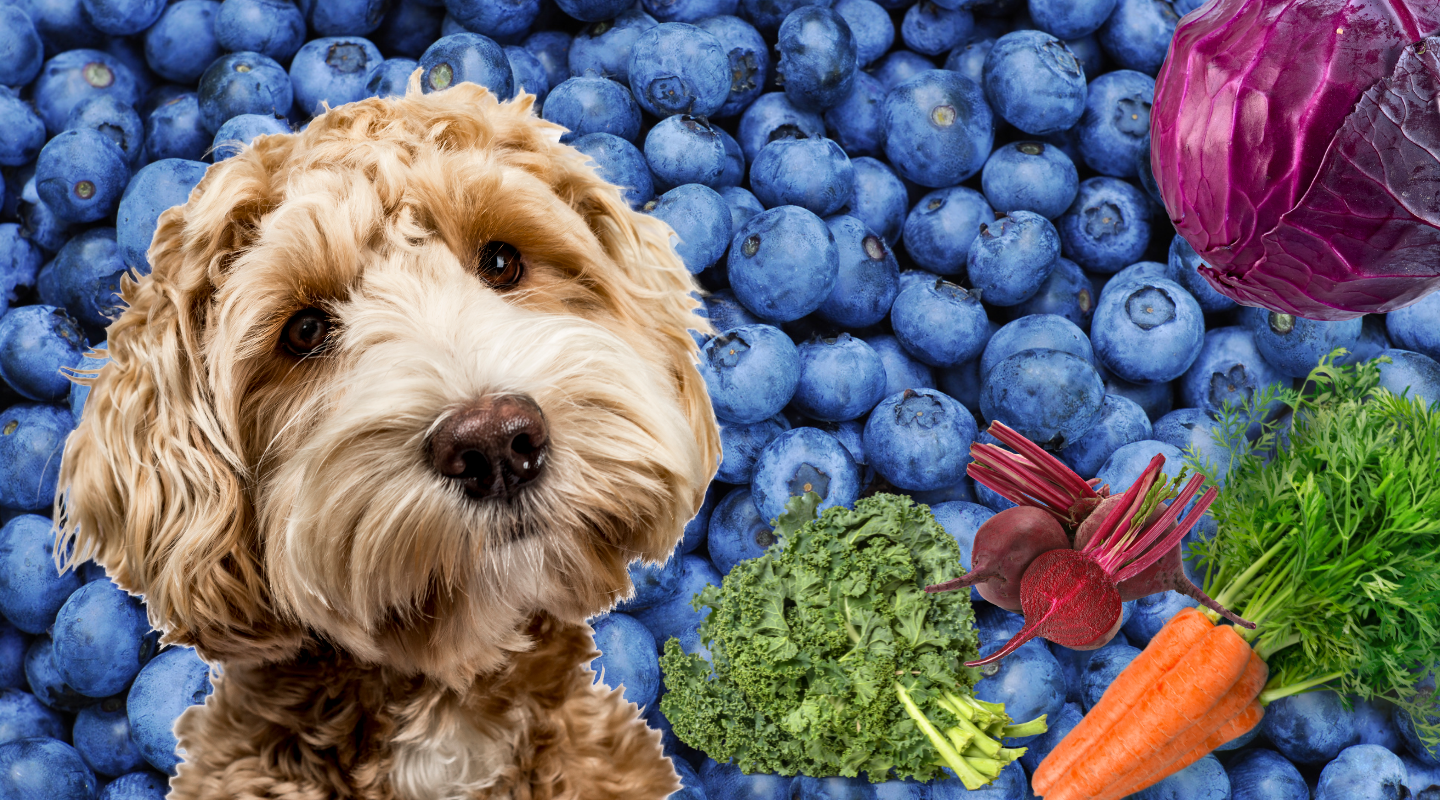If you want to raise a healthy dog and increase longevity, you need to start adding antioxidant-rich foods to your dog’s diet
Do you want to boost your dog’s bowl with healthy ingredients, and add some fresh fruits and veggies, but don’t know where to start?
Our PRO tip is to start with ingredients that are high in antioxidants!
A recent 2021 study by the University of Helsinki showed that when less than 80% of the puppy's diet consisted of dry food, a significantly decreased prevalence of allergy and atopy related skin symptoms was observed in adult age. (1)
Another study showed adding at least 20% fresh food ingredients can reduce disease markers, atopy/allergy incidence in dogs.
In this blog, we’re going to speak about 5 incredibly healthy and health-promoting foods that are high in antioxidants and can be added to any dog’s diet!

About LARRy Pruden
Larry is a holistic pet health advocate and a co-founder of PAWDEGA. For many years, Larry has been determined to raise awareness on raising pets naturally, safely, and holistically all while exposing the truth and mislabelling of pet products that can cause harm to our pets. Larry doesn’t like seeing animals being sick with issues which can be avoided. Larry continuously advocates for a healthier holistic lifestyle for pets and wants to empower pet parents to take proactive control of their pet’s life.
Sources
- https://www.sciencedaily.com/releases/2021/11/211118203742.htm?fbclid=IwAR3aTtv1hgfPvhiL8CMx5i4CblZ-JT0dhrFyswBubdwz3ldCPP4bZc-T2r8
- https://www.ncbi.nlm.nih.gov/pmc/articles/PMC4884860/
- https://pubmed.ncbi.nlm.nih.gov/18759450/
- https://pubmed.ncbi.nlm.nih.gov/16520073/
- https://www.ncbi.nlm.nih.gov/pmc/articles/PMC2850944/
- https://www.ncbi.nlm.nih.gov/pmc/articles/PMC5150257/
- https://www.ncbi.nlm.nih.gov/pmc/articles/PMC6273625/
- https://lipidworld.biomedcentral.com/articles/10.1186/1476-511X-12-115
- https://europepmc.org/article/pmc/pmc6835347
- https://www.ncbi.nlm.nih.gov/pmc/articles/PMC6128063/
- https://pubmed.ncbi.nlm.nih.gov/24937448/
- https://www.ncbi.nlm.nih.gov/pmc/articles/PMC8123435/
- https://www.ncbi.nlm.nih.gov/pmc/articles/PMC3142734/
- https://www.ncbi.nlm.nih.gov/pmc/articles/PMC3550877/
- https://pubmed.ncbi.nlm.nih.gov/20096093/



